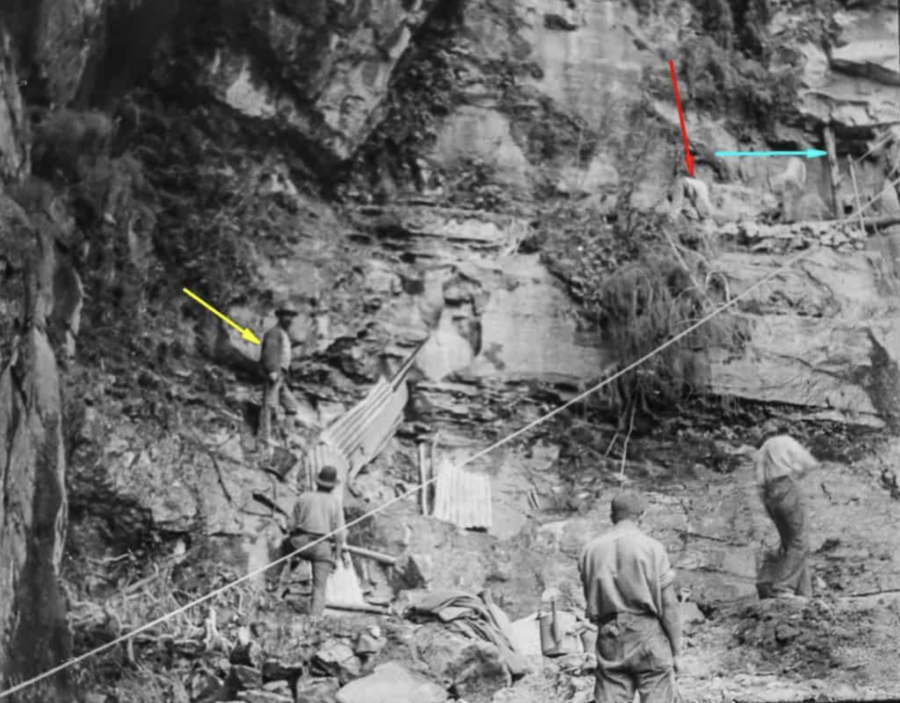
This photo, Fig 3.1, is taken looking downstream. The creek is disappearing over Leura Falls. The cast iron pipes used to move the sewerage to the filter beds appear to be 6” diameter, using bell and spigot joints. I am informed by David Anderson and Kenneth Anderson, via Facebook, that the joints between pipes were first packed with oakum, then a cotton rope was used to retain the molten lead that was then poured into the joint. This rope can be clearly seen at the two joints at the very right of the picture, (Green arrow) suggesting that they were waiting for the lead to be poured. The lead could have been melted in a portable forge like this one: https://www.youtube.com/watch?v=V8LqPSbnpY8
Here is a video, care of Kenneth Anderson of how it is done: https://youtu.be/m2wIQuDF9Pg
Mark Moultrie and Peter N Kaye Frazer report via Facebook, on making repairs to the pipeline, in Hec Robinson’s gang, as these joints failed with age.
In the centre is a billycan partially obscured behind a pipe offcut. In the foreground are some long rectangular objects rolled up in hessian, and on the right, a large hessian sack.
The pipes are retained in position by long bolts driven into holes in the rock. (Yellow Arrow) Hopefully, they can withstand the ferocious floods that roar down this narrow canyon.
In Gary Hayes’ drone photo of Leura Falls Fig 3.2, the rock overhang (red circle) can be clearly seen in the centre of 3.1 (Red arrow). I have marked the route of the pipeline, now covered in concrete and appearing white in the creek bed, and grey further down, with a blue line.


Fig 3.3 Looking upstream at the sewer pipe, the flowing water is quite blurred in this long exposure photo. More retaining bolts for the pipes can be seen, (Red arrows) and a worker watching Mr. Fitzgerald take the photo. (Blue arrow). The obligatory billycan and pipe offcuts (Orange arrow), and to the left under the rock shelter another billycan, hessian sack, and what appears to be a carpet bag.

In this photo, Fig 3.4, a flying fox cable runs across the picture, and the workmen are positioning corrugated iron sheets to act as formwork for the concrete to hold the pipes in position and protect them from rockfalls. A watering can waits to help in pouring the concrete. On the high ledge, a worker (red arrow) packs rocks under the pipe. There is a possible jig pole jammed under a ledge, top right, with a rope leading from it. (Blue arrow). The concrete was probably transported down the flying fox in a “kibble” or bucket with an opening bottom. The man (yellow arrow) is holding a bucket on a length of rope, so they may be actually pouring the concrete. The pile of bags centre bottom could be for the kibble coming in on the flying fox to bump up against.
